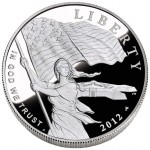
The original Star-Spangled Banner, the flag that inspired Francis Scott Key to write the song that would become our national anthem.
President James Madison, embroiled in a tight campaign for re-election, acquiesced to Congressional “war hawks” from the south and west and declared war on Britain in June 1812. Americans were emboldened by the fact that the British were deeply committed to a war with Napoleon Bonaparte that strained the resources of the crown. There was little acknowledgement in Washington that what passed for a standing army was only about half the size of Britain’s and stationed in widely scattered outposts; that the American Navy totaled about 50 ships to Britain’s more than 850; that coastal defense infrastructure was limited at best; and that there was no core of trained military officers to lead the poorly trained troops and militia. The British ships were much larger than their American counterparts.
Commercial and political interests in New York and New England, concerned about the potential destruction of shipping, opposed the war and in fact, continued to supply the British until the naval blockades were extended. Similarly, Britain saw America as an important market and supplier and only reluctantly responded to the declaration of war.
In the summer of 1812, American troops attempted to invade and conquer Canada. The poorly planned campaign ended in defeat and the withdrawal of the Americans. However, two American frigates, the USS Constitution and the USS United States, gained victories in naval battles, boosting American morale and contributing to President Madison’s re-election.
In response, the British gradually established and tightened a blockade of the American coast south of New York, impairing trade and undermining the American economy.
The attempts to invade Canada during the spring and summer of 1813 were somewhat more successful than the previous year’s, yet they ended in stalemate. By the end of the season, the British blockade had extended north to Long Island.
Remarkably, the young nation prevailed despite a long summer in the Chesapeake region. The British harassed citizens, burned towns and farms, and overwhelmed the scant American naval forces and militia. With the Americans distracted and largely unprepared, the British entered the nation’s capital and burned several public buildings, causing the President, his family and Cabinet to flee Washington. In September, however, an all-out land and sea defense of Baltimore forced the withdrawal of the British from the Chesapeake region. The same month, the British fleet in Lake Champlain was destroyed, leading to the British retreat into Canada. This defeat convinced the British to agree to a peace treaty, known as the Treaty of Ghent, with very few conditions. In January 1815, with neither side aware that the treaty had been signed the previous month, the British decisively lost the Battle of New Orleans. David had defeated Goliath.
The War of 1812 represents what many see as the definitive end of the American Revolution. A new nation, widely regarded as an upstart, successfully defended itself against the largest, most powerful navy in the world during the maritime assault on Baltimore and later at the Battle of New Orleans. America’s victory over Great Britain confirmed the legitimacy of the Revolution; established clear boundaries between eastern Canada and the United States; set conditions for control of the Oregon Territory; and freed international trade from the constraints that had led to the war. America emerged from the war with an enhanced standing among the countries of the world.
The war served as a crucial test for the U.S. Constitution and the newly established democratic government. In a bitterly divided nation, geographically influenced partisan politics led to the decision to declare war on Great Britain. Unprepared for war, under-financed, threatened by secession and open acts of treason, the multi-party democracy narrowly survived the challenge of foreign invasion.
Star-Spangled Banner Commemorative Coins
The 2012 Star-Spangled Banner Commemorative Coins are being sold by the U.S. Mint with the proceeds from the sales ($35 for each gold coin and $10 for each silver coin) to support the Maryland War of 1812 Bicentennial Commission.
- 2012 Star-Spangled Banner Gold Commemorative Obverse depicts a naval battle scene from the War of 1812, with an American sailing ship in the foreground and a damaged and fleeing British ship in the background. Designed by Donna Weaver and engraved by Joseph Menna.
- 2012 Star-Spangled Banner Gold Commemorative Reverse Depicts the first words of the Star-Spangled Banner anthem, O say can you see, in Francis Scott Key’s handwriting against a backdrop of 15 stars and 15 stripes, representing the Star-Spangled Banner flag. Designed by Richard Masters and engraved by Joseph Menna.
- 2012 Star-Spangled Banner Silver Commemorative Obverse depicts Lady Liberty waving the 15-star, 15-stripe Star-Spangled Banner flag with Fort McHenry in the background. Designed by Joel Iskowitz and engraved by Phebe Hemphill.
- 2012 Star-Spangled Banner Silver Commemorative Reverse depicts a waving modern American flag. Designed by William C. Burgard III and engraved by Don Everhart.
The commission will use these funds to support its bicentennial activities, educational outreach, and preservation and improvement of the sites and structures related to the War of 1812. Help support the commission’s activities by purchasing a commemorative coin today!
- Main text was adapted from Star-Spangled Banner National Historic Trail Feasibility Study and Environmental Impact Statement
 , National Park Service, U.S. Department of the Interior, Northeast Region, March 2004.
, National Park Service, U.S. Department of the Interior, Northeast Region, March 2004. - Image of the 15 Stars and Stripes Star-Spangled Banner courtesy of the Smithsonian Institute.
- Coin images courtesy of the U.S. Mint





